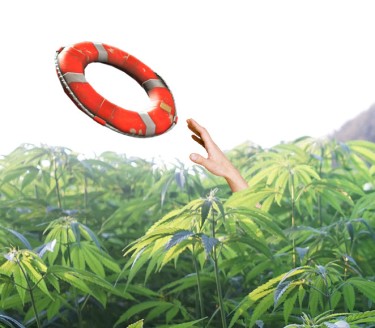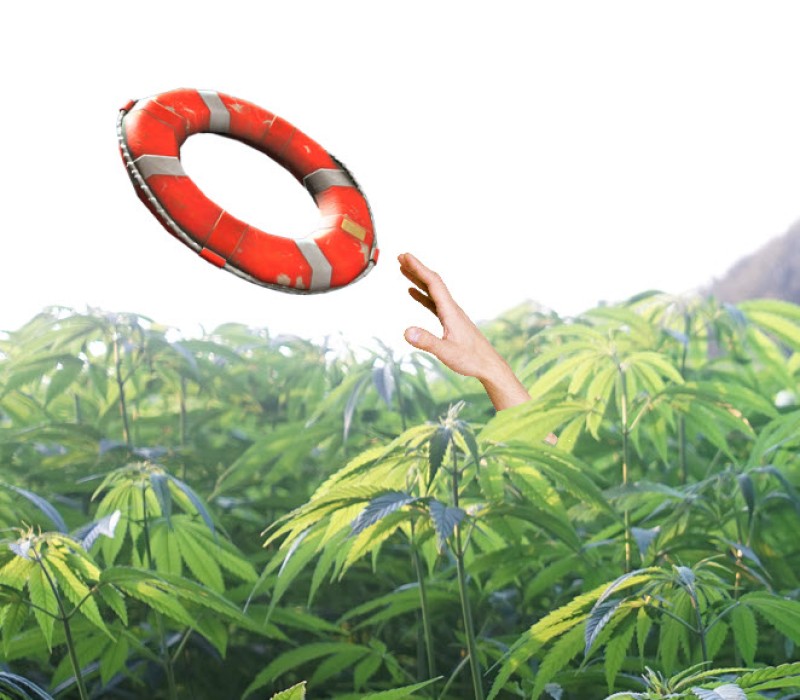
According to MJ Biz Daily, despite business failures and consolidation efforts, Canada's unsold cannabis stockpile grew in the final quarter 2022. This alarming trend indicates that companies may face challenges due to declining prices and margins.
The latest data from Health Canada reveals that the combined inventory of packaged and unpackaged dried cannabis reached a record-breaking 1.47 billion grams (3.2 million pounds) by December 2022. This figure includes unsold stockpiles from licensed producers, wholesalers, and retailers, highlighting the significant amount of cannabis that remains unsold in Canada.
Canada's whole population hovers around 38.3 million people, in comparison, the state of California alone has 39 million people.
Remember, that is just from the legal side of the Canadian market, that does not count any excess supply on the illicit market, which still controls a sizeable portion of the overall Canadian cannabis market.
The inventory of packaged and unpackaged cannabis has seen a notable increase from 1.3 billion grams in December 2021 to reach 1.47 billion grams by December 2022. Specifically, federally licensed cultivators held 1.39 billion grams of inventory, while wholesalers and stores held packaged inventory of 80.7 million grams.
These numbers highlight the persistent supply-and-demand imbalance within Canada's cannabis industry, despite significant producers closing their largest cultivation facilities. One notable example of facility closures occurred last year when Aurora Cannabis shut down its flagship Aurora Sky facility in Edmonton, Alberta, which was among the largest in Canada.
The oversupply is believed to contribute to the downward pressure on cannabis prices. Statistics Canada's Consumer Price Index indicates that the retail price of cannabis has dropped by nearly 30% since the legalization of adult-use sales in 2018. However, some estimates suggest that the price decline is even more significant.
According to the Canadian Cannabis Exchange (CCX), a live trading platform for B2B wholesale marijuana, wholesale prices in the country experienced a significant decline of over 40% in the past year alone. This substantial drop further emphasizes the challenges faced by the cannabis industry in Canada.
Heightened Competition
Businesses throughout the cannabis supply chain in Canada are facing challenges due to declining prices. Out of the 35 Companies' Creditors Arrangement Act (CCAA) filings in Canada between January 1 and December 22nd of the previous year, fourteen were related to companies operating in the cannabis industry.
The filings in Canada can be compared to bankruptcy filings in the United States. Elad Barak, CEO of Djot, a Toronto company specializing in cannabis dispensers and pod systems for concentrates, expressed his perspective on the situation. According to Barak, the issue lies not in a lack of competition but in excess of competition.
He believes many companies focus on cannabis cultivation without considering the challenges of selling their products. As a result, some companies are going out of business, but the cannabis they produce remains in circulation. Barak mentioned that these unsold inventories are often liquidated as part of the bankruptcy process.
Referring to the most recent data from Health Canada, Barak highlighted that Canada currently has close to 1,000 licensed producers operating within different sectors of the federally regulated cannabis supply chain. This number has continued to increase since the legalization of cannabis in October 2018, despite some companies leaving the industry through consolidation or via the Companies Creditors Arrangement Act (CCAA).
As of last summer, 886 licensed cultivators, processors, and sellers were operating under Canada's Cannabis Act. This figure was around 730 in 2021, 440 in 2020, and 206 in 2019.
Record 'Croptober'
During last year's "Croptober," which is the season when the majority of outdoor cannabis harvest takes place in Canada, cultivators achieved a record-breaking production of cannabis. The combined, dried cannabis output for September, October, and November reached 640 million grams, marking a 14% increase compared to the previous year. In the corresponding three-month period of 2021, approximately 560 million grams of dried cannabis were produced.
Health Canada data shows approximately 2 billion grams of cannabis were produced throughout 2022. To provide context, in the same year, retail sales of dried flower and pre-rolls in Alberta, British Columbia, Ontario, and Saskatchewan amounted to around 360 million grams, as reported by Cooper Ashley, the analytics manager at Headset, a cannabis data firm based in Seattle. It's worth noting that these provinces contribute to about three-quarters of the Canadian market.
Decrease in Cultivation Areas
Health Canada data indicates a continued decrease in Canada's licensed growing areas for cannabis cultivation. As of December 2022, the total area within federally licensed sites dedicated to indoor and greenhouse cannabis cultivation measured 1,595,724 square meters.
This represents a nearly 30% decline from the previous peak of 2,217,216 square meters recorded in May 2020. Moreover, the proportion of cannabis greenhouse area to the overall greenhouse area, which includes vegetable cultivation, is also experiencing a decline.
In 2020, cannabis cultivation peaked, occupying slightly over 11% of Canada's total greenhouse space. Presently, cannabis cultivation represents 7.6% of the country's combined greenhouse and indoor cultivation area, indicating a reduction of over 30%.
On the other hand, the decline in licensed outdoor cultivation areas is occurring at a slower pace. As of December 2022, the area dedicated to outdoor cultivation measured 595 hectares (1,470 acres), which is approximately 16% lower than the previous peak of 713 hectares in December 2021.
Adapting and Adjusting to Changing Circumstances
Certain businesses have implemented adaptive strategies to tackle the challenges posed by falling prices and increasing inventories. One example is SNDL, an Alberta-based cannabis producer and retailer, which introduced a temporary retail brand named Firesale Cannabis. These pop-up retail outlets are not intended to be permanent fixtures.
SNDL views this pop-up strategy as a solution to the sustainability issues faced by the cannabis industry. In their investor presentation, they described the pop-ups as a means to facilitate the sale of older inventory at significantly discounted prices, aiming to offer the most affordable cannabis products in Canada.
As of May 12, 2023, SNDL operates two Firesale stores. Adam Coates, the Chief Revenue Officer of Decibel Cannabis Co., which is among the leading cannabis producers in Canada in terms of sales, mentioned that the decline in prices within the discount and value segments had created challenges for the core and premium segments. This pricing pressure has impacted different components of the cannabis market.
Conclusion
The cannabis industry in Canada is facing significant challenges due to declining prices and oversupply. Despite efforts to address these issues, such as adopting pop-up retail strategies, businesses need help. The unsold cannabis stockpile has grown damaging companies' profitability and margins. Additionally, the decline in cultivation areas and the increasing competition within the industry further compound these challenges. It remains crucial for businesses to adapt and find innovative solutions to navigate the evolving landscape of the Canadian cannabis market.
MARKET SATURATION HITS THE MARIJUANA INDUSTRY, READ ON...







